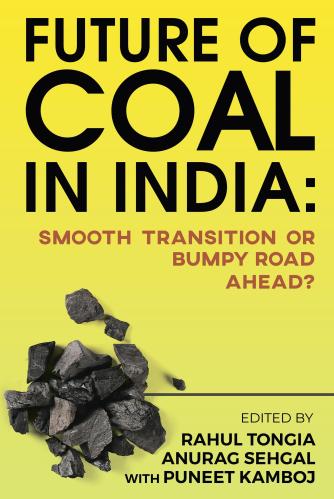Content from the Brookings Institution India Center is now archived. After seven years of an impactful partnership, as of September 11, 2020, Brookings India is now the Centre for Social and Economic Progress, an independent public policy institution based in India.
This article originally appeared in the Brookings Institution’s The Avenue Blog. Like other products of the Brookings Institution, this is intended to contribute to discussion and stimulate debate on important issues. The views are those of the author.
One of the main executive actions to be issued by President Obama on high-skilled immigration is to further expand and extend the Optional Practical Training (OPT), a program that allows foreign students holding F-1 visas to work for a limited period of time after graduating, for science, technology, engineering and mathematics (STEM) graduates. While not a permanent solution to the problems of high-skilled immigration, it is an option that presidents have used in the past.
In 2007 and 2008 when immigration reform failed in Congress, President George W. Bush extended the one-year OPT to 29 months for foreign students who graduated with a bachelor’s degree or higher in STEM fields. In June 2012, President Obama maintained Bush’s 29-month OPT term limit for STEM fields and increased the number of fields eligible for extension by an additional 90 fields.
Based on my research released earlier this year, about 38 percent of all foreign students on F-1 visas, or 362,500, were studying in the STEM fields during the 2008 to 2012 time period. This means that at least 72,500 graduates per year may benefit from this STEM OPT extension. The metropolitan areas in the table below could most potentially benefit from the order based on the percentage and number of foreign students studying STEM.
Top 10 Metro Destinations for STEM Students Pursuing Bachelor’s Degrees or Higher, 2008-2012

Yet, this temporary solution is problematic on several fronts.
- First, it does not offer a direct pathway from earning a degree to permanent residency. If F-1 visa holders want to work beyond their OPT period, their employers must compete for H-1B visas for highly specialized workers. The current visa system still limits the number of H-1B visas to 85,000 for private employers per year, of which 20,000 are set aside for graduates of U.S. universities. While H-1B visas are an option for students, only 35 percent of H-1B visas in 2010 went to former F-1 visa holders, including those extended through OPT.
- Second, if a foreign student’s employer is able to obtain an H-1B visa and then sponsors a green card application, the wait time for permanent residency can be more than 10 years due to per-country limits (each country can only get 7 percent of all green cards), a problem particularly for Indian and Chinese nationals—two of the largest foreign student populations. This executive action can potentially add more foreign workers into the green card pipeline, creating even longer wait times.
- Third, there are no minimum wage or salary requirements for foreign student graduates under the OPT program. Unlike the H-1B visa that involves the Department of Labor in ensuring that foreign workers are paid a prevailing wage for their specific occupation, the OPT does not collect wage nor occupational data. OPT is missing these important protections since it was originally created as an educational program to provide a year of work experience, rather than used as an employment-based visa.
The Senate’s Comprehensive Immigration Reform Bill, passed in 2013, did address many of these problems. The question now is whether the new Republican-dominated Congress can work with the president to fix them.


Commentary
Op-edWhy a Temporary Immigration Solution is Still Problematic for STEM Workers
BROOKINGS.EDU
November 24, 2014